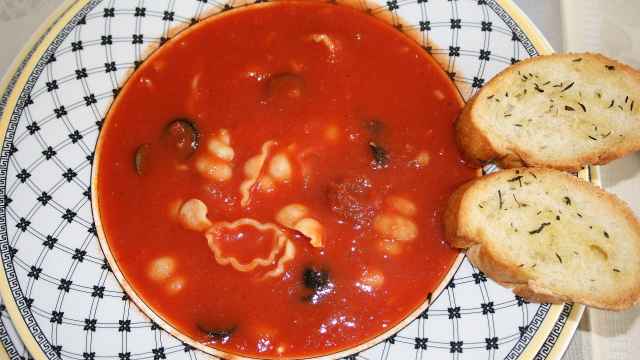The basis of the Russian diet historically has always been porridge. Even today porridges made with a variety of grains remain a simple and uncomplicated meal for Russians. But here's the paradox. This simple porridge became a dish that was synonymous with one of the most elegant and intricate Russian dishes ever invented. You've probably guessed it by now. We are talking about Guryev porridge.
Over the centuries recipes have been attributed to historical figures without any basis. But in this case, there is abundant evidence that Dmitry Guryev did indeed bring this amazing dish into our everyday life.
So who was this man who invented Guryev porridge? He was certainly not a chef looking for glory in the kitchen. Dmitry Alexandrovich Guryev was a Count and Minister of Finance. His marriage to Countess Saltykova brought him into the circle of aristocracy. He became a member of the entourage of the young Emperor Alexander I. In 1802 he was appointed aide to Count Vasilyev, Minister of Finance. After Vasilyev’s death, Guryev became Minister.
Russian memoirist Philip Vigel writes that Guryev "traveled abroad for a reason — he gained mastery in all things gastronomic there. He really had an inventive genius in this area, and it seems that patés, meat patties, and even a porridge bear his name."
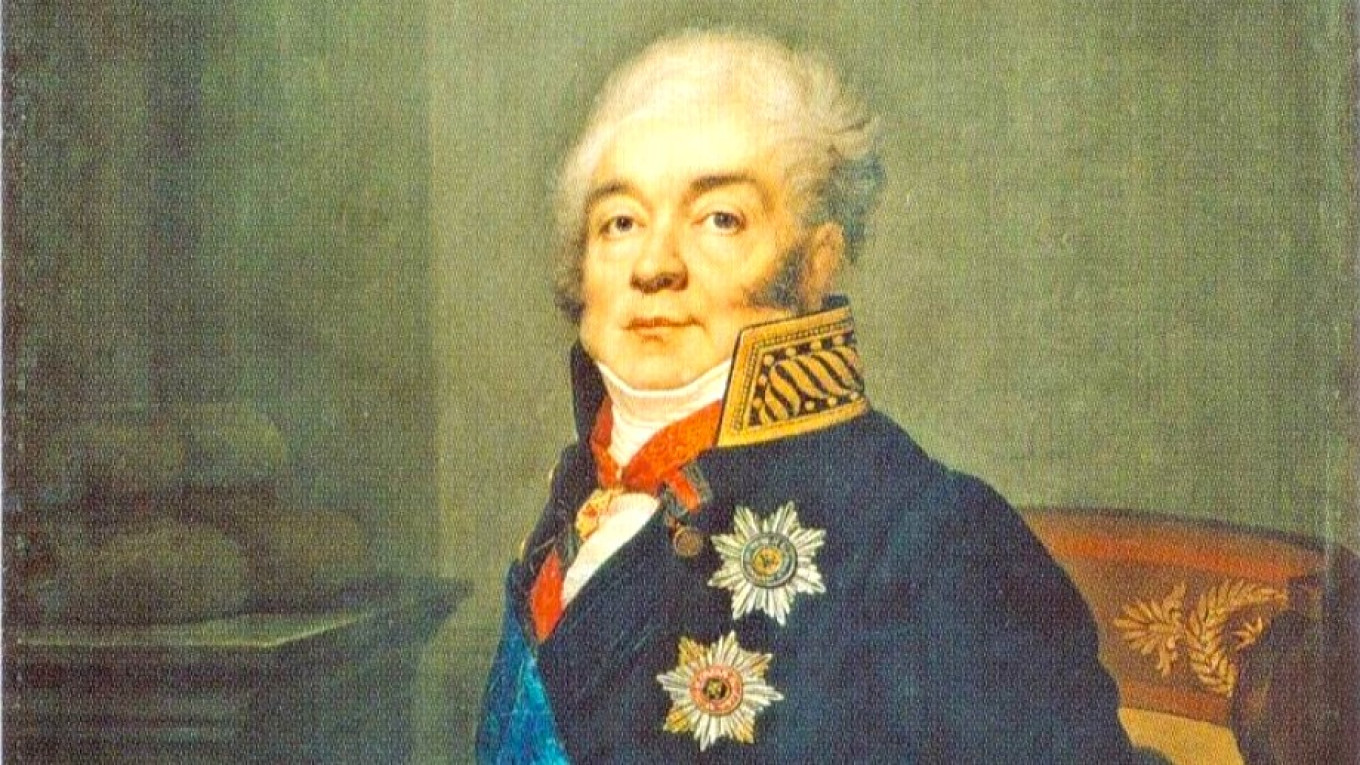
As we can see, even by the beginning of the 19th century Guryev's inventiveness in the kitchen was very well known. And so we can say with certainty that he created his famous porridge well before then. That is, the often-touted version that the porridge was "invented in honor of the victory over Napoleon" "by a serf cook named Zakhar Kuzmin," does not look convincing.
This version only comes from one source: a note by Prince Andrei Golitsyn in the journal "Historical Herald" published in 1900 under the title "A Historical Note About Guryev Porridge."
Golitsyn begins by citing the purchase deed of March 4, 1822 testifying that a retired major of the Orenburg dragoon regiment named Yurasovsky sold Count Dmitry Guryev a serf peasant family: Zakhar Kuzmin, 53 years old, and his wife.
Then Golitsyn writes that "the said Kuzmin was a great master of his trade. The Minister of Finance, Count Guryev, who once dined at Yurasovsky's... was positively delighted by some delicious porridge prepared by Kuzmich. Not being able to contain his delight, the Minister rushed to kiss the cook who had been able to delight a man so jaded gastronomically.”
Guryev entreated Yurovsky to sell him Kuzmin. At first Yurasovsky refused. But then, in order to get rid of the Count, he said he’d sell Kuzmin under three conditions that he thought were impossible to meet. First, Kuzmin had to agree; second, Guryev had to buy his entire family; and third, the price was the astronomical sum of 300 grams of gold. But, as Golitsyn writes, "what is impossible for an ordinary mortal turned out to be a trifle for the Minister of Finance." The cook had a new master.
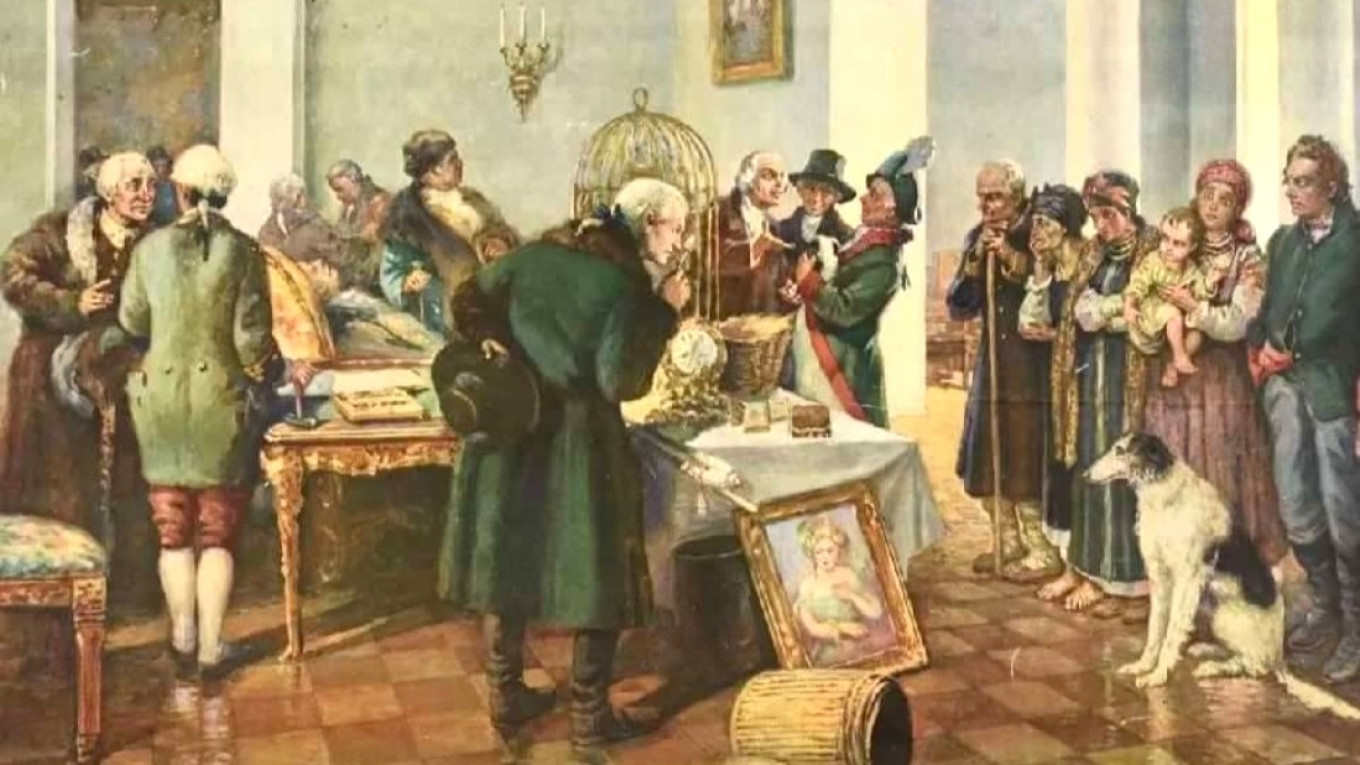
But it is unlikely that Guryev porridge was the cook’s crowning culinary achievement. In 1822 when Guryev bought Kuzmin, Guryev was 71 years old, which is definitely very old for gastronomic endeavors. A year later the tsar released him from service due to his poor health and old age. Two years later, in 1824, he passed away and was buried with full honors in St. Petersburg. Does it seem likely that Guryev had the strength at his age to "propagandize" Guryev porridge in high society? It's clear that the porridge was known long before Kuzmin joined Guryev’s household. That, however, does not diminish the culinary talents of the serf cook.
None of this is to diminish the dessert: Guryev porridge is a great achievement of Russian cuisine. It is an example of dishes made to please “Gargantua” — Rabelais’ giant king who had enormous capacity for consuming food and drink. That is, it is a kind of deliberate exaggeration of all the qualities of Russian sweets. The dish has sugar, condensed cream, nuts and baked dried fruits. It’s a gourmet's dream. It should be said that there is no canonical recipe for Guryev porridge. It seems that the dish itself is a kind of symbol of immoderate eating, which each chef understood in his or her own way.
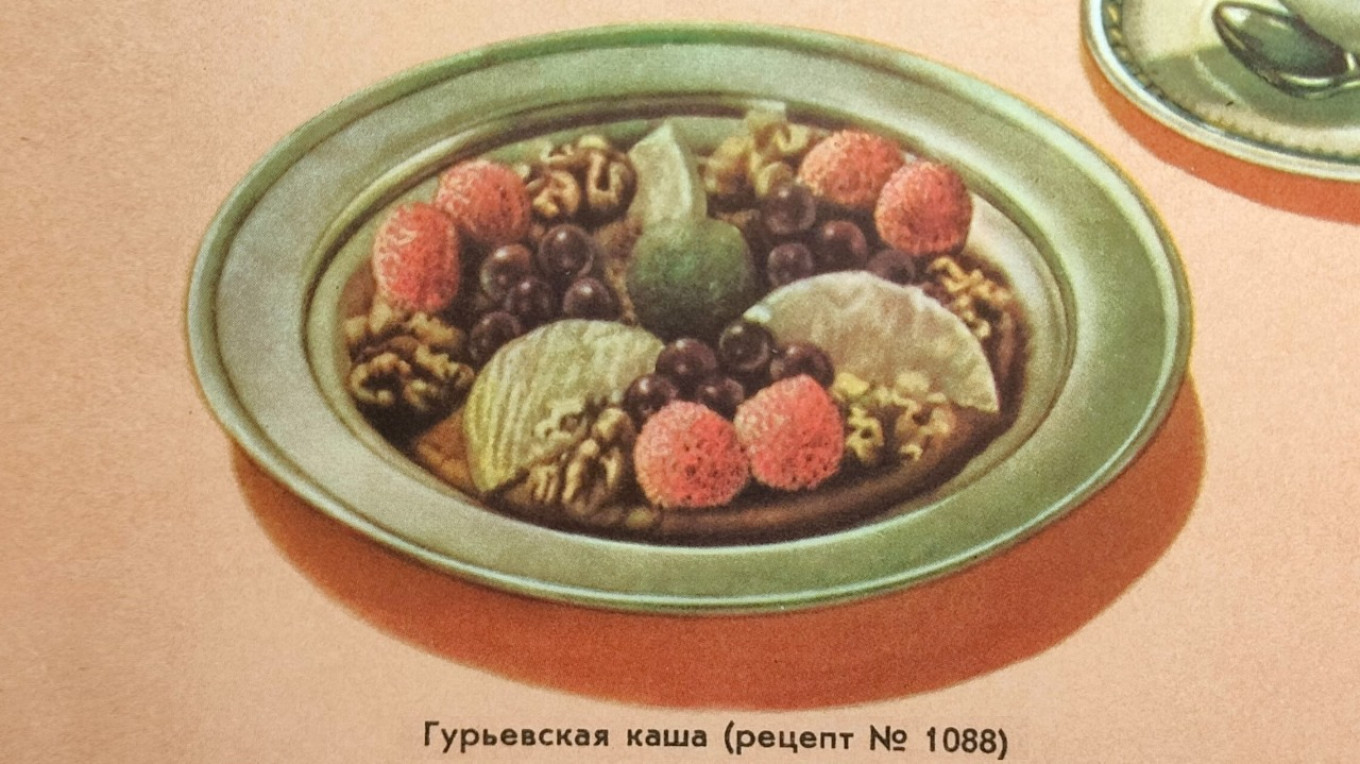
You can think of this dish any way you like — as a kind of hyperbole-dessert invented in Russian cuisine in the 19th century, or as the logical continuation of the "porridge tradition" that characterized Russian cuisine. In one sense Guryev porridge is the embodiment of the simple human aspiration to create something beautiful — even if here the aspiration stretched far beyond the everyday.
There is another story about this dish that captures Russian audacity and extravagance. Not surprisingly, the story took place where Russian restaurants and Russian merchants came together. Both had wild imaginations.
In pre-revolutionary Russia, the Nizhny Novgorod Fair was not only the center of trade — it was also the center of revelry for the merchant class. And so it is no wonder when the "Petersburg Newspaper" (№ 219 for 1895) related this very entertaining tale:
"Highly respected representatives of the Russian merchant class, undoubtedly wanting to have a bit of fun during their stay, came up with all kinds of escapades that then became the stuff of legend. They told the story of a wine punch that cost a thousand rubles. And now they tell the story of diamonds earrings of great value that were presented in… what do you think they were presented in? You will never guess — they were served in Guryev porridge!”
"A grand merchant took a fancy to a singer. He tried everything to win her favor. The singer sits in a private dining room of a restaurant, listens to words of love, drinks champagne by the glass if not the carafe, but refuses with great disdain to accept any gifts. And she won’t even hear of love and all the rest.”
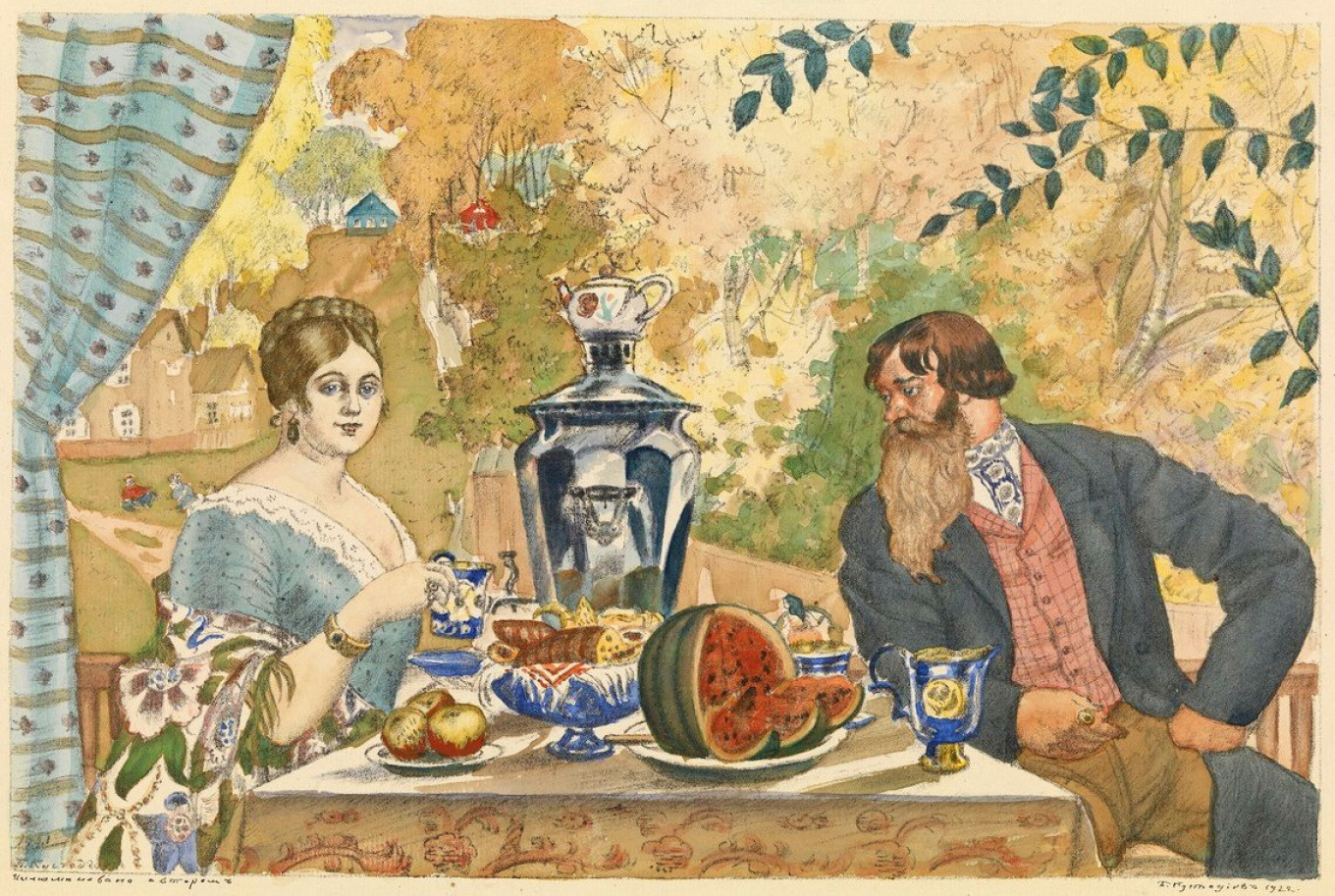
“But the merchant did not despair. He came up with the idea of making Guryev porridge not with French fruit, but with diamonds from the dealer Khlebnikov… A large group sat around the table in a private dining room of the restaurant. As usual, the singer sat next to the host. Guryev porridge is served. The singer puts in her spoon — and she stops, puzzled. Her spoon hit something hard. In a minute the layer of porridge fell off the spoon and revealed a jewel case. Inside were the extravagant earrings.”
The tale doesn’t reveal the result of this offering. All we know is that singer wore the earrings and the merchant had a very satisfied smile.
We make Guryev porridge from the recipe of Pelageya Alexandrova-Ignatieva, one of the greats of Russian cuisine. In 1899 she published "Practical Basics of Culinary Art," which is still an important manual for cooks today.
Guryev Porridge

The main difficulty making Guryev porridge is preparing the cream foam. The cream is put in the oven until a darkened foam appears on the surface. This froth is removed with a slotted spoon and the cream is put back in the oven to produce more foam, which is skimmed off. This is done many times. For this to happen the cream must be fresh — not regular store-bought cream, but farm-fresh cream straight out of a separator. The milk should also be farm fresh. For this recipe you may use ordinary (10-18% fat content) cream or whipping cream (about 36% fat content).
“Fruit macedoine” is a kind of fruit compote: fruit that has been diced and boiled in syrup. It can be any kind of fruit — apples, plums, strawberries, cherries.
Pelageya Alexandrova-Ignatieva offers two ways to serve Guryev pudding — hot or cold. If cold, it is served as a dessert instead of ice cream.
Ingredients
(for 6-8 servings)
- 100 g (3.5 oz) semolina
- 50 g (3 ½ Tbsp) butter
- 580 ml (2 ½ c) milk
- 770 ml (3 ¼ c) fresh cream, 18 to 36% fat content
- 1 vanilla bean
- 250 g (scant 9 oz) shelled walnuts
- 200 g (7 oz) fruit macedoine (see above)
- 150 g (3/4 c) sugar (50 g [4 Tbsp] — for porridge, 100 g [8 Tbsp] for caramelizing nuts)
- Juice of 1/2 lemon
- pinch of salt
Instructions
- Prepare the semolina porridge. Bring the milk to a boil and add the semolina while stirring with a spoon. Let it come to a boil a few times to thicken the porridge and thoroughly cook the semolina (the grains should fall apart). Add butter — 50 g (3 ½ Tbsp) or to taste — sugar, a pinch of salt, and a vanilla pod cut in half. Stir, then cover the pan tightly with a lid, put in a pan of hot water and then put both pans into the oven at medium heat for 30 minutes.
- While the porridge is in the oven, prepare the foam as follows: pour cream into a wide saucepan, put it in the oven at medium heat or (preferably) put it in a Russian stove. As soon as the cream begins to produce a slightly dark foam on the surface, remove the foam carefully with a slotted spoon and reserve. Put the cream back in the oven until the cream again becomes frothy; skim the foam and reserve. Do this until the cream stops frothing. There will only be a thick sediment on the bottom of the saucepan. Remove the vanilla pod and add the sediment to the porridge.
- Prepare the walnuts: Pour boiling water over the nuts, cover with a lid and let stand for 10-15 minutes. Shuck the skins and dry the nuts in a pan on the stove.
- Grease a flat plate with olive oil.
- Prepare the caramel. Pour 100 grams of sugar into a small saucepan, pour in the lemon juice and place on medium heat. Stir the sugar constantly with a spatula until it turns into caramel — a dark red syrup.
- Put the nuts into the caramel and stir quickly with a fork. Quickly transfer the caramelized nuts from the sauté pan to the greased plate and cool.
- Butter the heat-proof bowl in which the Guryev porridge will be served. Cover the bottom of the bowl with a layer of porridge, then a layer of foam, then a light layer of caramelized nuts, broken into pieces, then the mixed fruit. Repeat the layering, ending with porridge on top.
- Sprinkle the top layer with sugar and use a kitchen burner to caramelize the sugar.
- Garnish the top of the porridge with a few remaining nuts and pieces of fruit. Serve hot.
- You can serve hot berry or fruit syrup separately with the porridge.
A Message from The Moscow Times:
Dear readers,
We are facing unprecedented challenges. Russia's Prosecutor General's Office has designated The Moscow Times as an "undesirable" organization, criminalizing our work and putting our staff at risk of prosecution. This follows our earlier unjust labeling as a "foreign agent."
These actions are direct attempts to silence independent journalism in Russia. The authorities claim our work "discredits the decisions of the Russian leadership." We see things differently: we strive to provide accurate, unbiased reporting on Russia.
We, the journalists of The Moscow Times, refuse to be silenced. But to continue our work, we need your help.
Your support, no matter how small, makes a world of difference. If you can, please support us monthly starting from just $2. It's quick to set up, and every contribution makes a significant impact.
By supporting The Moscow Times, you're defending open, independent journalism in the face of repression. Thank you for standing with us.
Remind me later.





